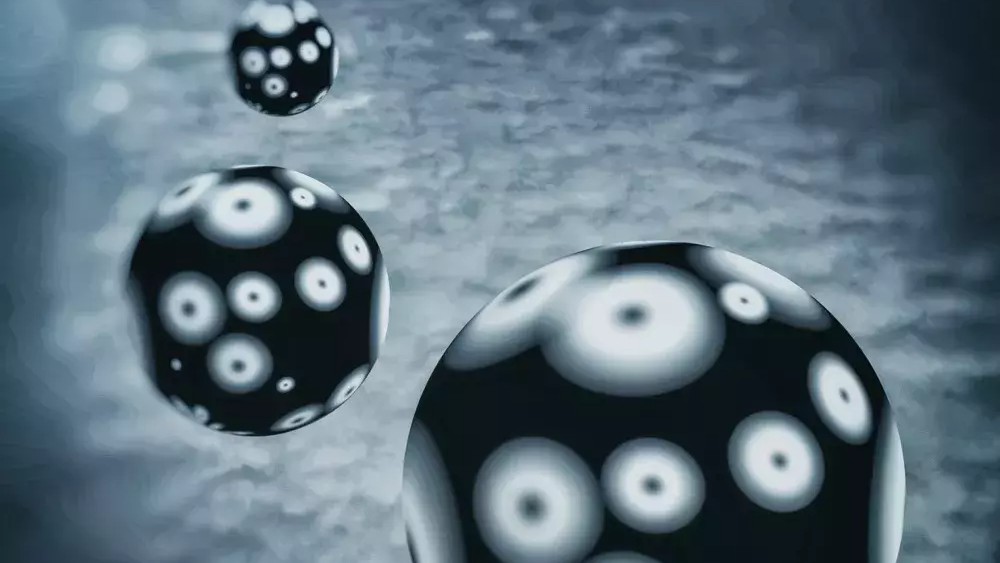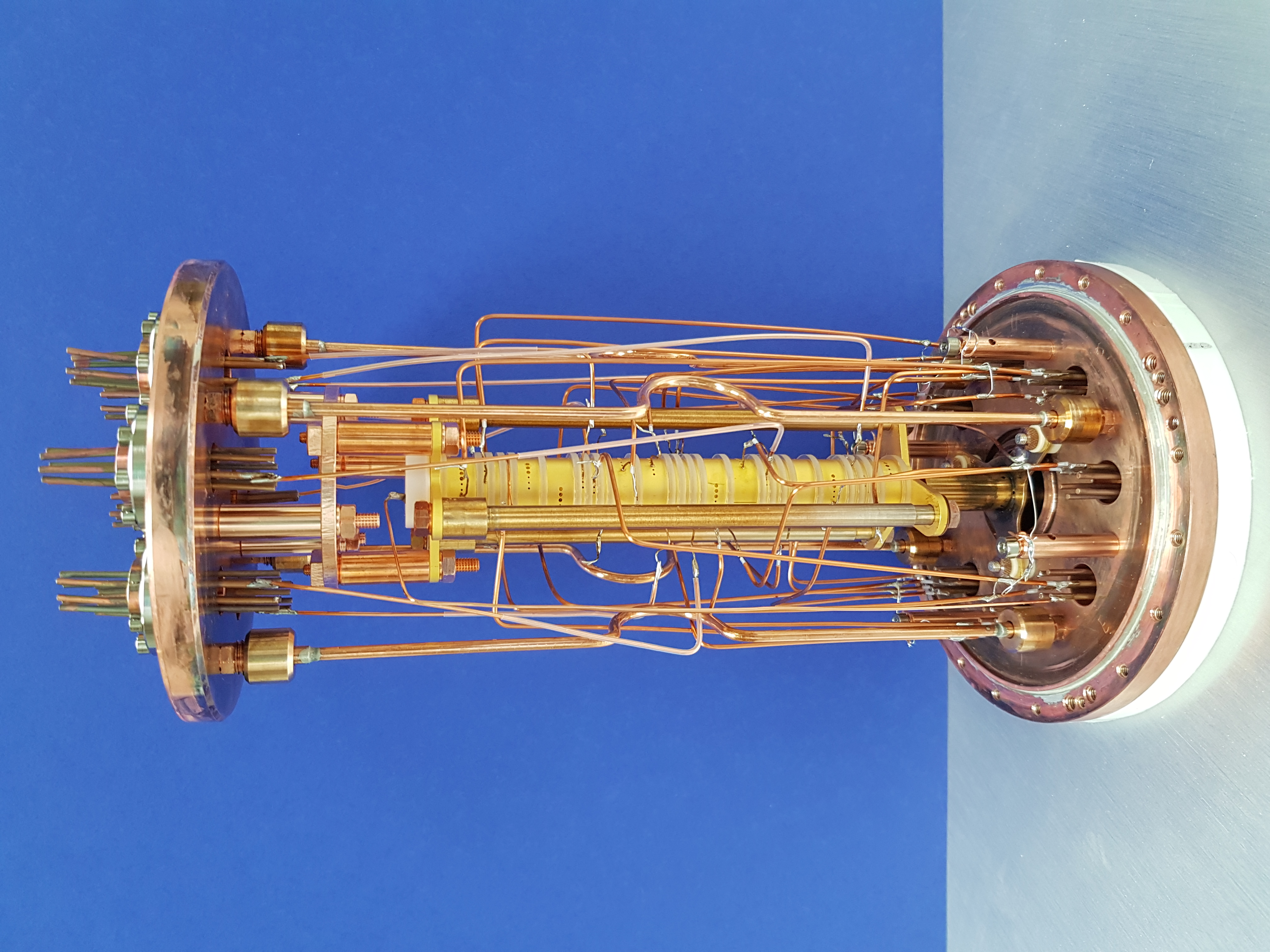Scientists are one step closer to knowing the mass of ghostly neutrinos — possibly paving the way to new physics
By precisely measuring the mass of neutrinos — ghostly particles that stream through your body by the billions each second — physicists could find some glaring holes in the Standard Model of particle physics. A new experiment has taken them one step closer.

Physicists have taken one small-but-consequential step toward measuring the mass of an elusive "ghost particle" called a neutrino — an achievement that could poke a significant hole in the Standard Model of particle physics.
A precise measurement of the neutrino’s mass would enable physicists to delve deeper into the evolution of our universe and potentially find new, undiscovered physics lurking beyond the Standard Model.But measuring this mass is not easy. The particles' spooky nickname is well-earned: they lack an electrical charge and have almost no mass, meaning they fly straight through regular matter at close to the speed of light.
So, to approach the most precise upper limit on the neutrino's mass yet, the researchers had to devise an experiment with unprecedented sensitivity. They reported their findings in a paper published April 19 in the journal Nature Physics.
"With an Airbus A-380 with a maximum load, you could use this sensitivity to determine whether a single drop of water has landed on it," Christoph Schweiger, a doctoral student at the Max Planck Institute for Nuclear Physics in Germany and the study's first author, said in a statement.
Every second, about 100 billion neutrinos pass through each square centimeter of your body. The tiny particles are everywhere — produced in the nuclear fire of stars, in enormous supernova explosions, by cosmic rays and radioactive decay, and in particle accelerators and nuclear reactors on Earth.
In fact, neutrinos, which were first discovered zipping out of a nuclear reactor in 1956, are second only to photons (light particles) as the most abundant subatomic particles in the universe.
Related: Ghostly neutrino particles are blasting out of a nearby galaxy, and scientists aren't sure why
Get the world’s most fascinating discoveries delivered straight to your inbox.
In the past, physicists assumed that neutrinos (much like photons) had no rest mass — a fact that would make their existence compatible with the Standard Model of particle physics. But this assumption was challenged by the discovery of neutrinos streaming out of the sun, which can switch at random between the three "flavors" of neutrinos — electron, muon and tau neutrinos, which refer to the different particles the neutrinos interact with.
Such a transformation should be possible only if neutrinos have some mass, leading physicists to design complex experiments to gauge it.
A ghost on the scales
Technically, the weirdness of the quantum mechanical mixing among the three neutrino flavors means that none of them have a well-defined mass. Instead, they are combinations of three different "mass states." This means that physicists don't look for an exact reading of a neutrino's mass but for an upper limit of how big this mass could be.
Nearly 99% of the mass of any object, including our own bodies, comes from the binding energy holding elementary particles together inside atoms. The remaining 1% of the mass, however, is intrinsic to those particles.
To find this intrinsic mass, physicists look for something called the Q value — the difference between the sum of the masses of the initial reactants and the sum of the masses of the final products. With this value in hand, further measurements can extract the intrinsic mass from the overall mass of the atom.
One neutrino-mass-measuring experiment, the Karlsruhe Tritium Neutrino experiment (KATRIN) in Germany, found a precise estimate for the neutrino's mass by measuring the energy — and, therefore, by Einstein's E = mc2, the mass difference — as superheavy hydrogen decayed into helium, emitting an electron and a neutrino in the process.
The KATRIN experiment’s best result found an upper neutrino mass limit of 0.8 electronvolts, making it roughly 500,000 times smaller than the mass of an electron.
This measurement can also be made in reverse by observing an electron being captured by the artificial isotope holmium-163, transforming it into dysprosium-163 and releasing a neutrino. But to do so, the isotope must be surrounded by gold atoms.
"However, these gold atoms could have an influence on holmium-163," Schweiger said. "It is therefore important to measure the value of Q as precisely as possible using an alternative method" and to compare it with the mass value determined through the KATRIN method in order to detect possible sources of error.
To get closer to a separate measurement of the neutrino's elusive mass, the researchers designed an experiment known as a Penantrap — a combination of five "Penning traps," which can capture atoms inside a combination of an electric field and a magnetic field, in which they swing in an intricate motion known as a "circle dance."
By placing charged holmium-163 and dysprosium-163 ions inside the Penning traps and measuring the subtle differences in their swing rates, the physicists gauged the difference in their energies caused by the additional neutrino.
The result was a measurement of a Q value that the researchers say is 50 times more precise than the result of any previous experiment. With this result in hand, an even better upper limit for the neutrino's mass is one tiny — but consequential — step closer.

Ben Turner is a U.K. based writer and editor at Live Science. He covers physics and astronomy, tech and climate change. He graduated from University College London with a degree in particle physics before training as a journalist. When he's not writing, Ben enjoys reading literature, playing the guitar and embarrassing himself with chess.



